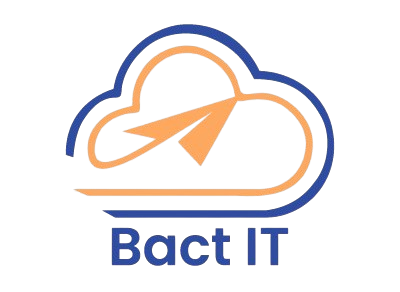Web Design and Development

We are committed to equipping individuals and organizations with the tools and expertise they need to thrive in a rapidly changing digital world.
Request A Quote !
Web Design and Development (Full Stack) Course Outline
Duration: 100–120 Hours
Level: Beginner to Advanced
Delivery Mode: Online / Offline
Target Audience: Aspiring web developers, UI/UX designers, Students, IT professionals
Prerequisites: Basic knowledge of HTML, CSS, and basic programming concepts
Module 1: Introduction to Web Development
- Overview of Web Development: Front-End vs. Back-End vs. Full Stack
- Understanding the Web Development Life Cycle
- Tools and Technologies for Web Development
- Setting Up Development Environments: IDEs, Version Control (Git/GitHub)
- Introduction to Web Hosting and Deployment
Module 2: HTML (Hypertext Markup Language)
- Introduction to HTML and the Structure of Web Pages
- HTML Elements: Tags, Attributes, and Structure
- Working with Text, Links, and Images
- HTML Forms and Input Elements
- HTML Tables, Lists, and Semantic Tags
- Understanding the Document Object Model (DOM)
Module 3: CSS (Cascading Style Sheets)
- Introduction to CSS and Styling Techniques
- CSS Selectors, Properties, and Values
- Box Model Concept: Margins, Borders, Padding, and Content
- Positioning and Display: Flexbox, Grid Layout
- Responsive Web Design and Media Queries
- Advanced CSS: Transitions, Animations, and Transformations
Module 4: JavaScript (Client-Side Scripting)
- Introduction to JavaScript and its Role in Web Development
- JavaScript Syntax and Data Types
- Variables, Operators, and Functions
- Control Structures: Loops, Conditionals, and Switch Statements
- Objects, Arrays, and Functions in JavaScript
- DOM Manipulation with JavaScript
- Event Handling: Clicks, Mouse Events, and Keyboard Events
- Debugging JavaScript Code Using Console and Developer Tools
Module 5: Advanced JavaScript Concepts
- Introduction to Asynchronous JavaScript: Promises and Callbacks
- AJAX (Asynchronous JavaScript and XML)
- Fetch API for HTTP Requests
- Introduction to JavaScript ES6+ Features (Let, Const, Arrow Functions, Classes)
- Error Handling: Try, Catch, Finally
- JavaScript Design Patterns and Best Practices
- Introduction to Node.js
Module 6: Version Control with Git and GitHub
- Introduction to Version Control
- Understanding Git Commands: Clone, Commit, Push, Pull
- Branching and Merging in Git
- Collaboration with GitHub: Pull Requests, Issues, and Forking
- Resolving Merge Conflicts
- Best Practices for Using Git and GitHub in Web Development
Module 7: Introduction to Front-End Frameworks (React.js)
- Introduction to React.js and Component-Based Development
- Setting Up React Environment with Node.js and npm
- JSX Syntax and Rendering Elements
- Props and State in React
- Event Handling and Forms in React
- React Router for Navigation
- Managing Data with React Hooks
- Introduction to React Lifecycle Methods
- Building a Simple React Application
Module 8: UI/UX Design Principles
- Introduction to User Interface and User Experience Design
- UI/UX Design Process: Research, Design, Test, Iterate
- Design Tools: Figma, Adobe XD, Sketch
- Wireframing and Prototyping Techniques
- Principles of Effective Web Design: Usability, Accessibility, and Mobile-First Design
- Color Theory, Typography, and Layout Design Best Practices
- Creating Responsive Layouts and Mobile-First Designs
Module 9: Introduction to Backend Development (Node.js)
- Introduction to Node.js and JavaScript Runtime
- Setting Up a Node.js Environment
- Introduction to npm (Node Package Manager)
- Building a Simple REST API with Node.js
- Working with Express.js for Server-Side Scripting
- Handling HTTP Requests and Responses in Node.js
- Introduction to Databases and CRUD Operations
Module 10: Databases (MongoDB)
- Introduction to Databases: Relational vs. Non-relational
- Introduction to NoSQL Database: MongoDB
- Setting Up MongoDB and Using MongoDB Atlas
- Basic CRUD Operations in MongoDB
- Working with Collections and Documents
- MongoDB Query Language (MQL)
- Introduction to Mongoose.js for MongoDB Interaction
- Data Validation, Indexing, and Aggregation in MongoDB
Module 11: Authentication and Security
- Introduction to User Authentication and Authorization
- Implementing JWT (JSON Web Tokens) Authentication
- Securing Passwords: Hashing with bcrypt
- Introduction to OAuth for Third-Party Authentication
- Security Best Practices for Web Development
- Preventing SQL Injection and Cross-Site Scripting (XSS)
- Setting up HTTPS and Secure HTTP Headers
- CSRF Protection
Module 12: Deployment and Cloud Services
- Introduction to Web Hosting and Deployment
- Hosting Static Websites with GitHub Pages
- Deploying Full Stack Applications with Heroku
- Setting up a Cloud Database on MongoDB Atlas
- Introduction to Cloud Services: AWS, DigitalOcean, and Netlify
- Continuous Integration and Continuous Deployment (CI/CD)
- Domain Names, SSL Certificates, and DNS Configuration
Module 13: Advanced Front-End Technologies (Vue.js/Angular.js)
- Introduction to Angular.js (or Vue.js) Framework
- Setting Up Angular Environment with Angular CLI
- Angular Directives, Components, and Services
- Data Binding and Dependency Injection in Angular
- Building Single Page Applications with Angular
- Working with Angular Forms and Validation
- Introduction to Vue.js and Component System
Module 14: Building Full Stack Applications
- Understanding Full Stack Development
- Integrating Front-End (React.js/Angular) and Back-End (Node.js)
- Creating a Full Stack Web Application (CRUD App)
- Connecting Front-End to Back-End using REST API
- Integrating MongoDB with Node.js Application
- Deploying Full Stack Applications on Heroku or AWS
Module 15: Final Project and Exam Preparation
- Capstone Project: Build a Full Stack Web Application
- Step-by-Step Project Guidance: Concept to Deployment
- Testing, Debugging, and Optimizing the Application
- Final Review and Q&A Session
- Preparing for Web Development Interviews and Career Tips
